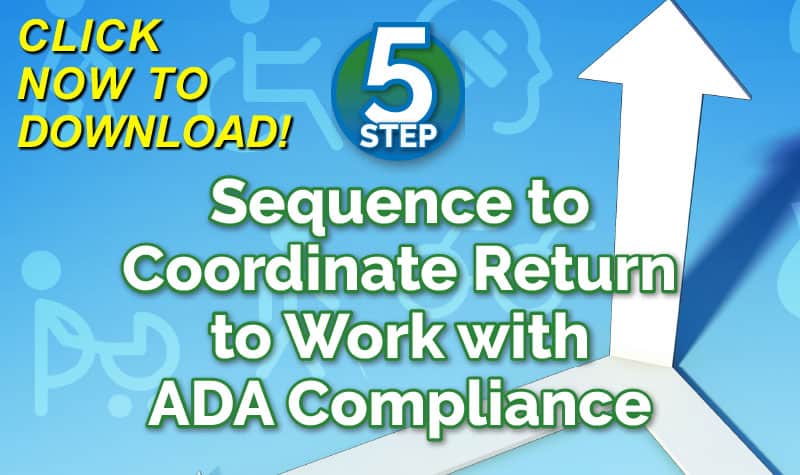In the first decades of the 20th Century, work comp was the only game in town for disabled workers. This was the time before unemployment benefits, Social Security disability, FLMA, ADA, etc.
As the new laws appeared, the employer saw no advantages – they thought – and, instead, were burdened with an avalanche of compliance paperwork. Few bothered to read the full text of the new laws, and the volumes of regulations that accompanied them. (Nearly all are federal laws)
Federal Laws Mixed With State Laws Create Inconsistencies
When these federal laws are compared to provisions in state comp laws, surprising things emerge – such as inconsistent definitions of disability and fitness to work. Compare work comp laws with the Americans with Disabilities Act (ADA). In NY, work comp presumes an inability to work which the employer/carrier can overcome only with overwhelming medical evidence (or some “gotcha” surveillance videos showing undisclosed work).
After 1993, however, the comp laws had to co-exist with ADA, which presumed that most disabled people were capable of full earning capacity, with reasonable accommodation. So one law was presuming disability, and awarding billions in benefits, while another was presuming no loss of earning capacity, and threatening the employer who actually believed the comp board findings with penalties.
Opportunity With DOT Medical Exams In Workers Compensation for Trucking
A few years ago, your correspondent discovered that many, if not nearly all, serious comp claims by truckers had workers who successfully renewed their DOT driving certificates with a medical exam showing no inability to drive a heavy vehicle. Yet, the exams came in the middle of comp claims alleging ongoing damage to limbs that would have made it impossible to drive a heavy vehicle.
The “unexpected consequence” moment came when, after much paperwork to obtain releases, the DOT medical exam was compared with the comp medical records. The worker had to choose. Which version of the facts that he gave to the doctors was the truth? Most had to opt for continuing to keep the DOT certificate and forego further disability on the comp claim.
A careful review of two laws governing disability, especially when one is federal and one is a state law, shows many cases of inconsistent definitions. But it also provides unique opportunities to discover inconsistent statements, since few people believe that anyone will take considerable trouble to locate and produce the inconsistencies (both made under penalty of perjury).
Few Attorneys Knowledgeable of Both Laws
Few comp lawyers have been required to read the co-existing laws. And the specialists who deal with the other laws are grateful that they have nothing to do with comp. As a result, little, or nothing at all, has been written about the possibilities of comparing the data contained in each file. And each file is protected from release by HIPAA and various state laws. However, the barriers can be overcome by those willing to do the extra work
Author: Attorney Theodore Ronca is a practicing lawyer from Aquebogue, NY. He is a frequent writer and speaker, and has represented employers in the areas of workers’ compensation, Social Security disability, employee disability plans and subrogation for over 30 years. Attorney Ronca can be reached at 631-722-2100. medsearch7@optonline.net
Editor Michael B. Stack, CPA, Director of Operations, Amaxx Risk Solutions, Inc. is an expert in employer communication systems and part of the Amaxx team helping companies reduce their workers compensation costs by 20% to 50%. He is a writer, speaker, and website publisher. www.reduceyourworkerscomp.com. Contact: mstack@reduceyourworkerscomp.com.
©2013 Amaxx Risk Solutions, Inc. All rights reserved under International Copyright Law.







